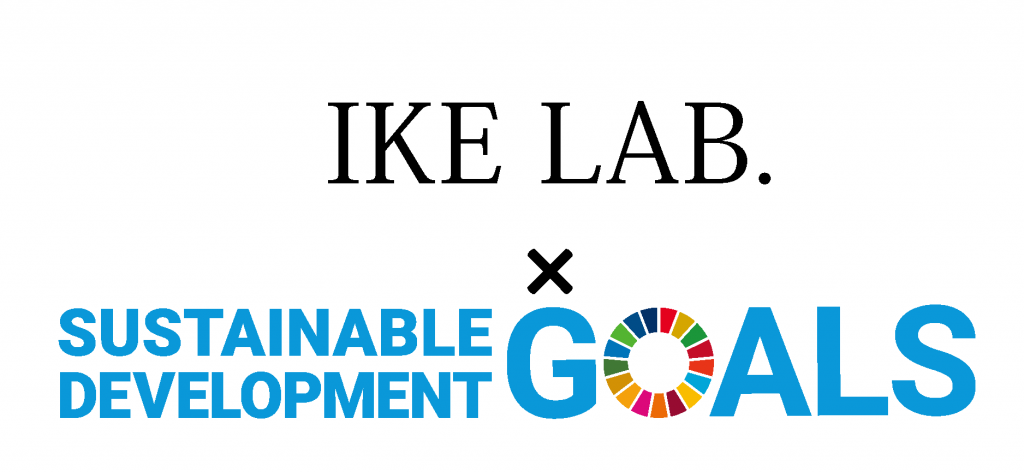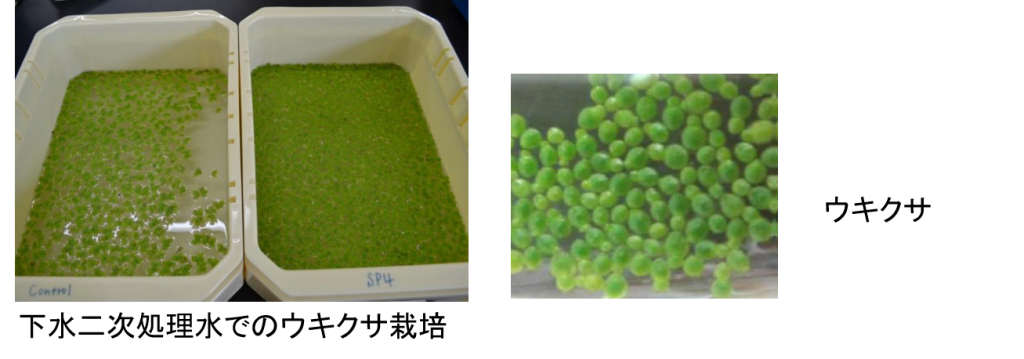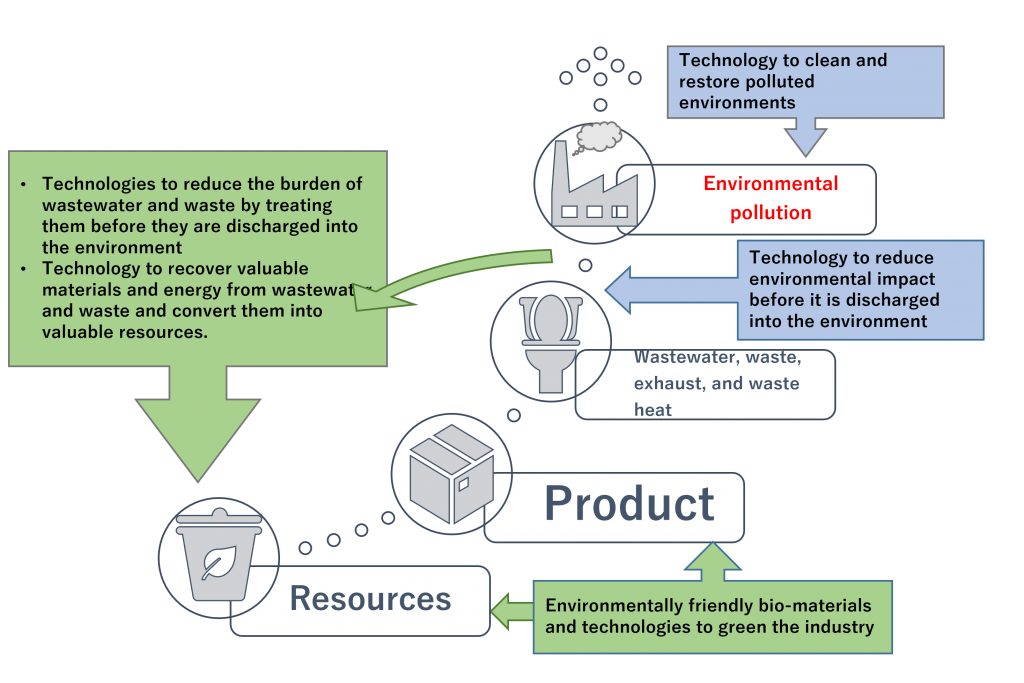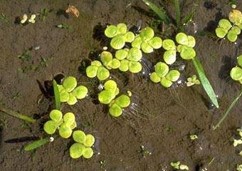
We will achieve the SDGs by developing technologies through sustainable use of the environment and resources that utilize the power of living organisms.
The establishment of environmental and resource conservation will happen through bio- and eco-technology and their implementation in society
There are diverse approaches to the use of living organisms to protect the environment and resources.
- Activate the organism present
By optimizing the environmental conditions in a natural or semi-natural state, we can stimulate and maximize the biological functions that are inherent in nature.
- Utilization of special and unique organisms and biological effects
We search for organisms with functions suitable for environmental purification, etc., and use bioreactors and other means to create optimal environmental conditions to maximize their capabilities.
- Modification of biological functions by genetic engineering, etc.
By modifying the DNA of organisms, genetically modified organisms with superior functions can be created and utilized.
- Imitation of biological functions
By developing a thorough understanding of biological materials and biological reactions, we reproduce and utilize them through physical and chemical techniques.
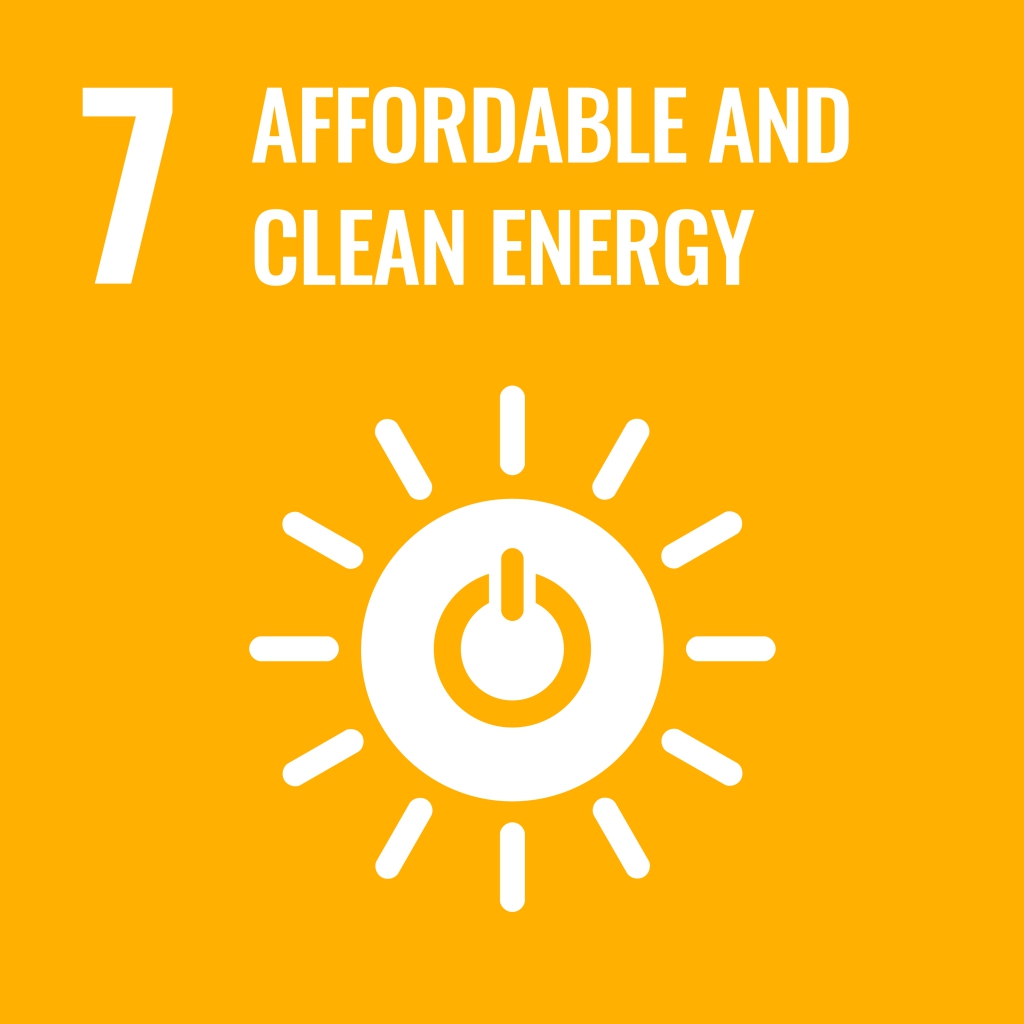
Creating Biomass Resources with Spirodela polyrhiza.
while purifying water, and because it is grown in water, it does not put pressure on farmland needed for food production. We are aiming to improve the efficiency of biomass production through research and development to control the bacterial community in the Spirodela polyrhiza rhizosphere, which affects their growth.

Cultivation of Spirodela polyrhiza in secondary treated sewage water
- What is biomass ?
-
A recyclable organic resource derived from plants and animals, including wood, seaweed, food waste, dead animals, manure, and plankton.
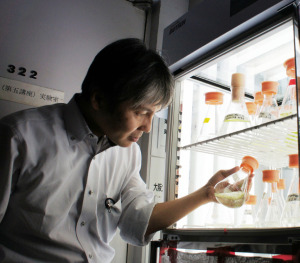 Prof.IKE
Prof.IKESymbiotic bacteria have a great influence on the growth of seaweed. We have artificially created a model bacterial community to live in symbiosis with seaweed and are investigating the effects on growth.
Aiming to establish a technology for recovering resources from wastewater by utilizing the metal metabolism of microorganisms
While rare metals are one of the important resources that support modern science and technology, many of them are known to become harmful substances in the environment. We are conducting research and development on technologies to recover highly toxic rare metals from wastewater as resources by utilizing the diverse metal metabolism capabilities of microorganisms.
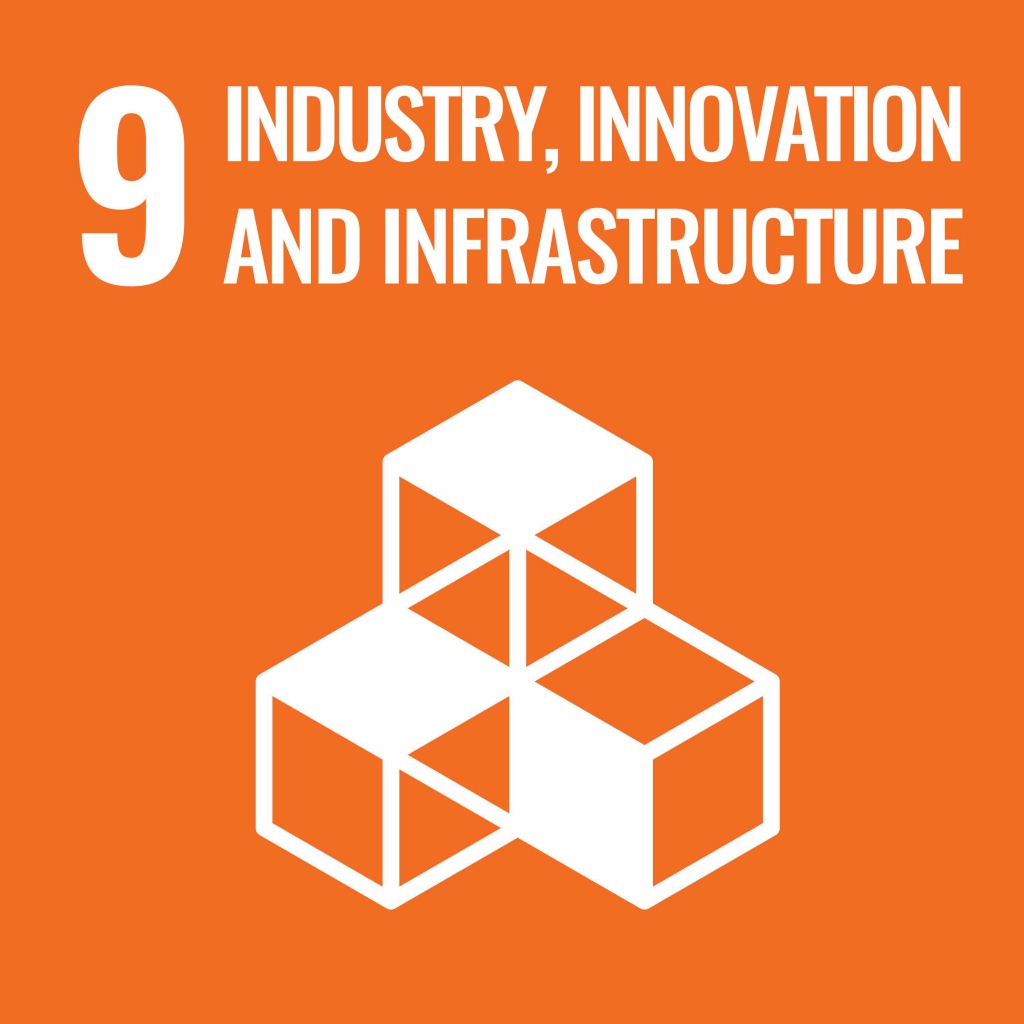


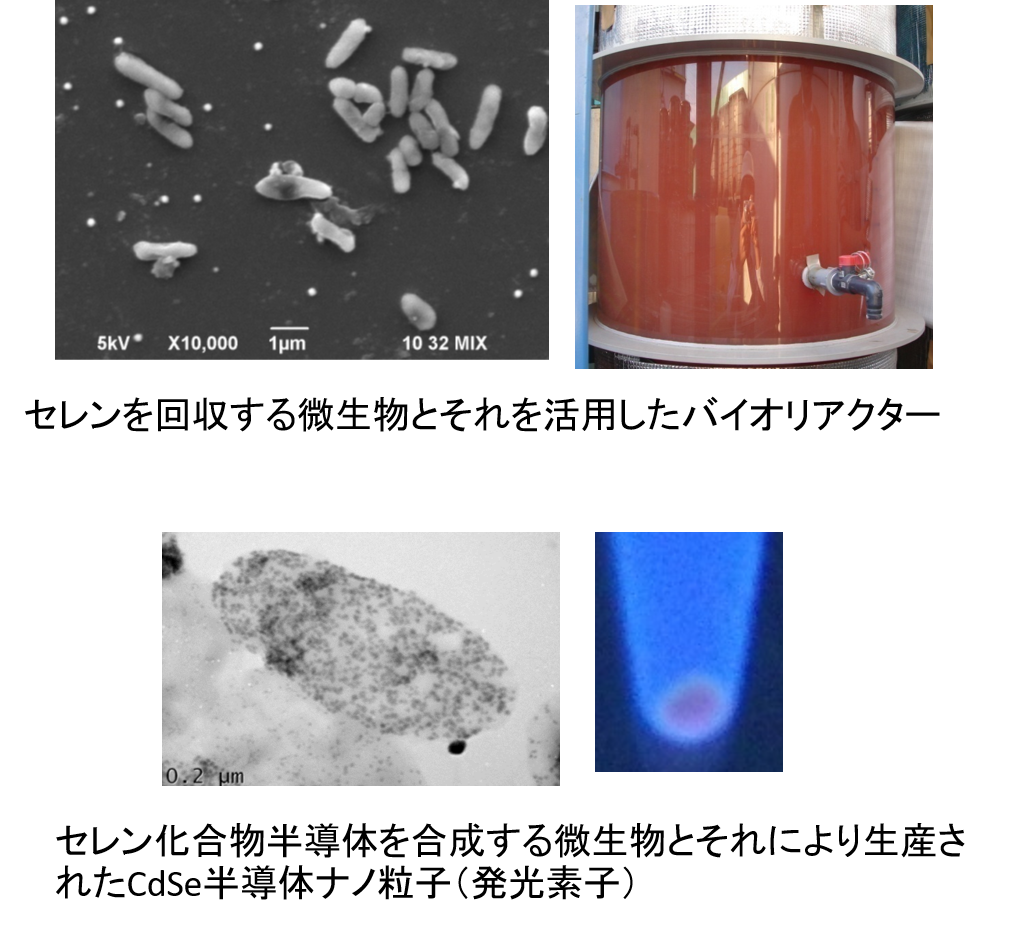
Microorganisms that recover selenium and a bioreactor that utilizes them (photo above)
Microorganisms that synthesize selenium compounds and the CdSe semiconductor nanoparticles produced by the microorganisms
(light-emitting devices) (photo below)



We have established a technology to detoxify and recover selenium and tellurium from wastewater at low cost. By applying this technology, we are aiming to develop a process for microbial synthesis of compound semiconductors, which are used in advanced industries, using wastewater as a raw material.


Develop and implement water treatment technology that efficiently decomposes toxic chemicals in sewage.
We are conducting research to establish a new wastewater treatment technology that uses decomposing bacteria to remove 1,4-dioxane, a substance that is suspected of being carcinogenic and persistent.

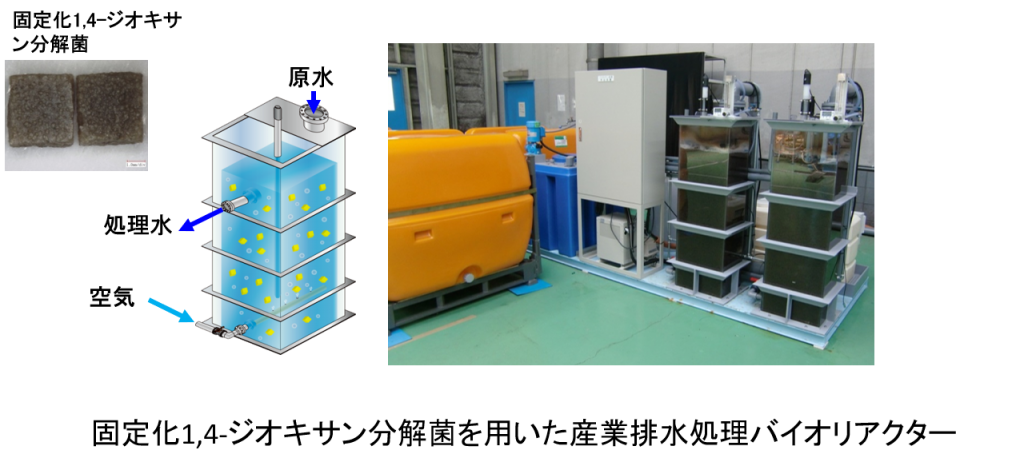
Bioreactor for industrial wastewater treatment using immobilized 1,4-dioxane degrading bacteria
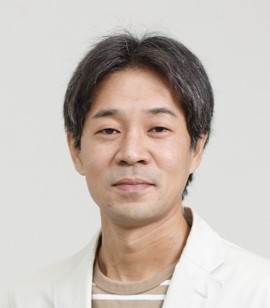


1,4-dioxane is an extremely troublesome chemical substance that cannot be efficiently removed by wastewater treatment technologies developed to date. In addition to 1,4-dioxane, we have been working on the development of treatment technologies for a variety of other hazardous chemicals.
Aiming to establish a system to convert organic matter in sewage into energy and resource-rich materials
We have discovered that the excess sludge generated in sewage treatment contains microorganisms that produce bioplastic resources. We are conducting research and development on technologies to efficiently produce bioplastics from organic matter in wastewater and recover them in high purity.
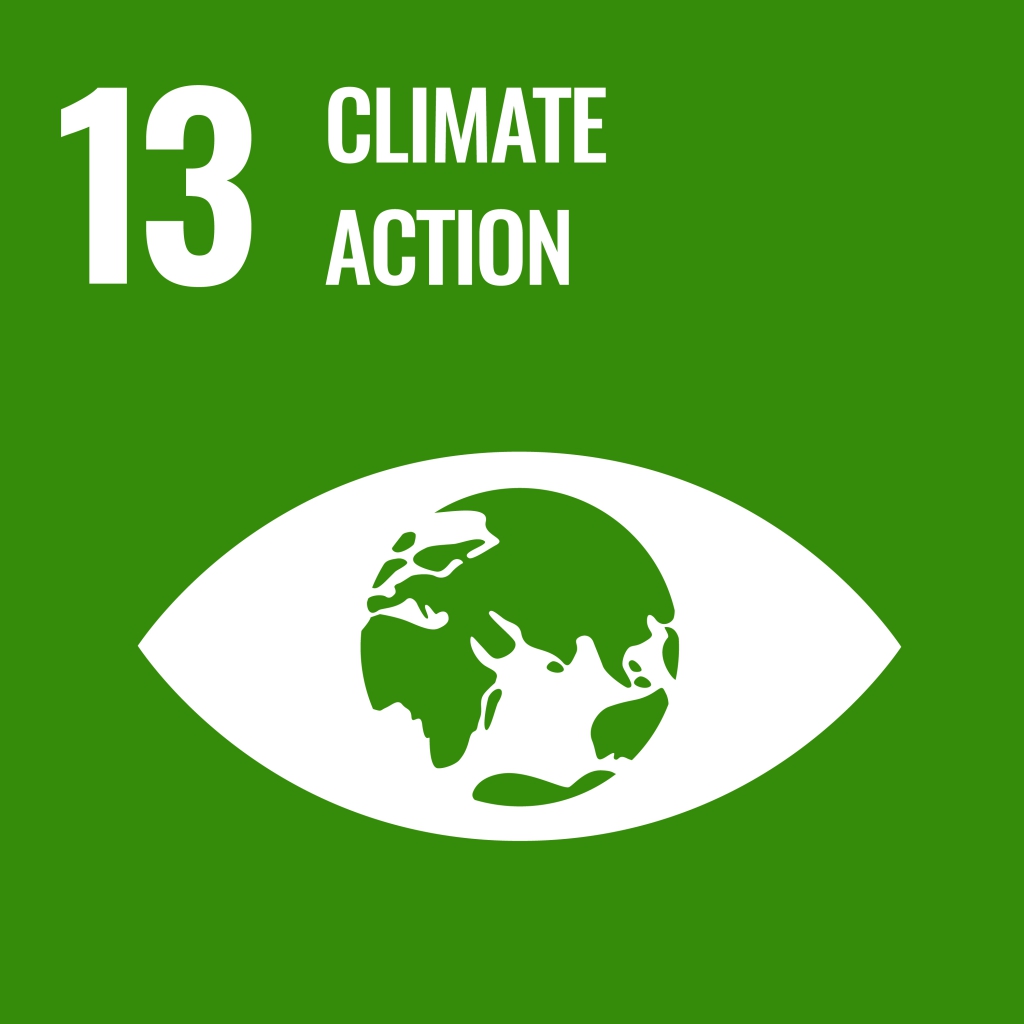



Production of bioplastic (polyhydroxyalkanoic acid; PHA) using excess sludge



We are also conducting research on the production of methane (the main component of natural gas) from sewage to enable sewage treatment plants to become energy independent. We believe that the establishment of a system that uses sewage as a raw material to produce energy resources and a wide variety of chemical products will play a major role in building a recycling-oriented society.

